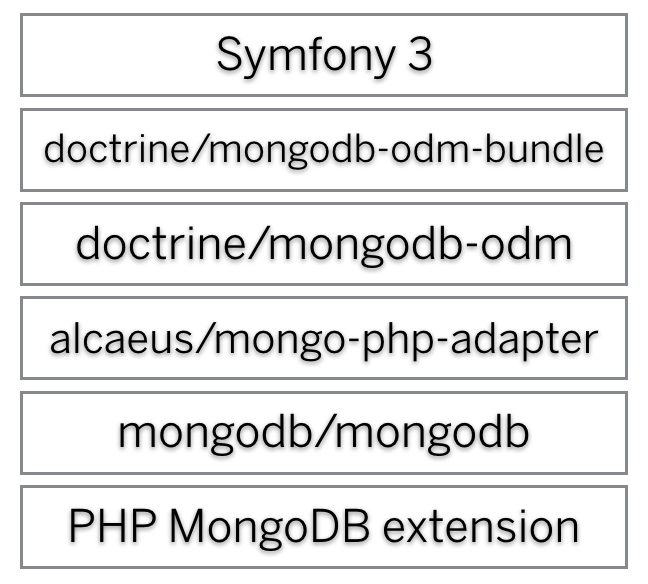Mongodb Install

This will install the MongoDB server and the related client tools (see the next section for the list). Install MongoDB via Official MongoDB Packages. Installing MongoDB with the official MongoDB packages is recommended for production. Step 1: Import the MongoDB Public GPG Key.
Description The official driver for Node.js. Provides a high-level API on top of that is meant for end users. NOTE: v3.x was recently released with breaking API changes.
You can find a list of changes. MongoDB Node.JS Driver what where documentation api-doc source mongodb Bugs / Feature Requests Think you’ve found a bug?
Want to see a new feature in node-mongodb-native? Please open a case in our issue management tool, JIRA: • Create an account and login. • Navigate to the NODE project. • Click Create Issue - Please provide as much information as possible about the issue type and how to reproduce it. Bug reports in JIRA for all driver projects (i.e. NODE, PYTHON, CSHARP, JAVA) and the Core Server (i.e.
SERVER) project are public. Questions and Bug Reports • Mailing List: • JIRA: Change Log Change history can be found in. Installation The recommended way to get started using the Node.js 3.0 driver is by using the npm (Node Package Manager) to install the dependency in your project. MongoDB Driver Given that you have created your own project using npm init we install the MongoDB driver and its dependencies by executing the following npm command. Npm install mongodb --save This will download the MongoDB driver and add a dependency entry in your package.json file. You can also use the package manager. Troubleshooting The MongoDB driver depends on several other packages.
These are: • • • • The kerberos package is a C++ extension that requires a build environment to be installed on your system. You must be able to build Node.js itself in order to compile and install the kerberos module. Furthermore, the kerberos module requires the MIT Kerberos package to correctly compile on UNIX operating systems. Consult your UNIX operation system package manager for what libraries to install. Windows already contains the SSPI API used for Kerberos authentication.
However, you will need to install a full compiler tool chain using Visual Studio C++ to correctly install the Kerberos extension. Diagnosing on UNIX If you don’t have the build-essentials, this module won’t build. In the case of Linux, you will need gcc, g++, Node.js with all the headers and Python. The easiest way to figure out what’s missing is by trying to build the Kerberos project. You can do this by performing the following steps.
Node-gyp rebuild This should rebuild the driver successfully if you have everything set up correctly. Other possible issues Your Python installation might be hosed making gyp break.
Test your deployment environment first by trying to build Node.js itself on the server in question, as this should unearth any issues with broken packages (and there are a lot of broken packages out there). Another tip is to ensure your user has write permission to wherever the Node.js modules are being installed. Quick Start This guide will show you how to set up a simple application using Node.js and MongoDB. Its scope is only how to set up the driver and perform the simple CRUD operations. For more in-depth coverage, see the. Create the package.json file First, create a directory where your application will live.

Step #1: Add the MongoDB Repository For a refresher on editing files with vim see: vim /etc/yum.repos.d/mongodb.repo Option A: If you are running a 64-bit system, add the following information to the file you’ve created, using i to insert: [mongodb] name=MongoDB Repository baseurl=gpgcheck=0 enabled=1 Then exit and save the file with the command:wq. You should see an output very similar to the following image: Option B: If you are running a 32-bit system, add the following information to the file you’ve created, using i to insert: [mongodb] name=MongoDB Repository baseurl=gpgcheck=0 enabled=1 Then exit and save the file with the command:wq. Step #3: Get MongoDB Running Start-Up MongoDB systemctl start mongod Check MongoDB Service Status systemctl status mongod Summary List of Status Statistics (Continuous) mongostat Summary List of Status Statistics (5 Rows, Summarized Every 2 Seconds) mongostat --rowcount 5 2 Enter the MongoDB Command Line mongo By default, running this command will look for a MongoDB server listening on port 27017 on the localhost interface. If you’d like to connect to a MongoDB server running on a different port, then use the –port option. For example, if you wanted to connect to a local MongoDB server listening on port 22222, then you’d issue the following command: mongo --port 22222 Shutdown MongoDB systemctl stop mongod. Garmin nuvi password reset.